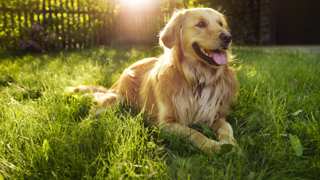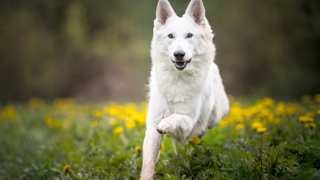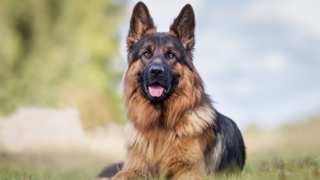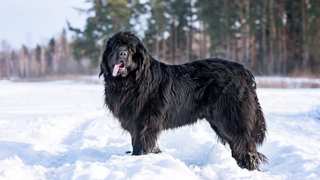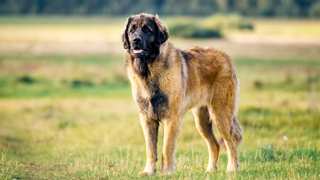Though large and athletic, these dogs aren't super-active, so Black Russian Terrier exercise requirements aren't too extensive. BRTs are very task-oriented, so they'll need a variety of activities that both condition them physically (walking, jogging, or fetch) and stimulate them mentally (canine sports). They make excellent bicycling companions as well.
The typical adult BRT, depending on its age and overall activity level, will need about 45 minutes of proper exercise per day--which you can achieve with a couple of walks, jogs, or bike rides and a good period of play. You can start exercising your Blackie puppy when it's three months old by taking it on short (5- to 7-minute) walks, then you can increase the walks' length and frequency as the puppy grows.
A few things to consider when exercising your Black Russian Terrier: first, puppies younger than nine months old shouldn't participate in activities that include a lot of jumping, running on hard surfaces, or navigating of stairs, as doing so can injure their still-developing joints and bones. And regardless of age, all BRTs should be leashed when in public. These dogs are extremely loyal to and protective of their people, and might be defensive and confrontational around strange people and animals; a leash will help you control your Blackie in these situations. Also, large, deep-chested breeds like the BRT are prone to bloat, an often-fatal condition caused by a dog's stomach filling with excess air when it "wolfs" its food; the condition usually occurs when a dog eats just before or after exercising. It's best, therefore, not to exercise your Blackie for an hour before or two hours after the dog eats. And finally: it's best to exercise along with your BRT, rather than have the dog do it alone. Dogs of this breed are sensitive and form close bonds with their owners, and will exhibit major behavioral problems (including aggression) if they don't have frequent companionship. Exercises you perform together, in other words, are definitely recommended.
Precautions aside, it's important to exercise your BRT every single day. These dogs have a strong work ethic and they thrive on human company, and without consistent activity, they'll become frustrated and will be destructive and even aggressive--so regular exercise is great for both the dog's and your own peace of mind! A few exercise ideas:
- Walking/Jogging/Bicycling: Two 20-minute walks (or 15-minute jogs or bike rides) per day is a good target
- Fetch/Frisbee: BRTs will chase a ball, stick, or Frisbee for hours
- Tug-of-War: Great indoor, rainy-day activity; use a rope or old towel
- Canine Sports: BRTs can excel at obedience and agility trials, cart-pulling, and other events
- Swimming: These dogs usually love the water; start swimming with the dog when it's still a puppy
- Hiking: Excellent bonding activity; the dog can even carry the backpack
If your Blackie spends a lot of time indoors, it's a good idea to give the dog access to one or more balls or chew-toys that will allow it to burn excess energy. It's also recommended that you establish a consistent exercise schedule for the dog, such as walks, jogs, or bike rides in the late morning and early evening and a play period in the afternoon.


